Inspired by SADF's Casspir MPV
During its long and protracted border wars with Namibia and Angola, South African Forces developed an expertise in mine-resistant vehicles, since mines were a very common and widespread, low-cost weapon in these border areas. The type was proper to South Africa before the 2004 conflict in Iraq erupted, with subsequent coalition forces deployed over large areas to patrol against Islamic insurgents and terrorists. IEDs were the possibly the nastiest of these devices, claiming the lives of hundreds and destroying in the process several tanks and numerous Humvees, that, as designed for a conventional cold war scenario, were ill-prepared for this new kind of attack. In effect, the US Army/USMC investigated for a new way to deal with the threat while pursuing the missions, and several companies, including those manufacturing the Casspir, were contacted. 68 Casspirs were ultimately acquired by the US Army.About Force Protection Inc.
The former Sonic Jet Performance, Inc. (a California speedboat company founded in 1997) became after the one-eleven attacks at the instigation of its chairman, Franck Kavanaugh, the Force Protection, Inc. specialized in protected vehicles for the Army and private companies. The insolvent company Technical Solutions was acquired, as well as its two prototypes, the Cougar and the larger Buffalo, both MPVs. The company was refunded, scaled-up, rationalized, the team being reinforced by an internationally recognized blast expert, Dr. Vernon Joynt. F.P. presented the Buffalo to the Army and earned a contract in 2002. Others followed, and the Buffalo has been delivered to around 700 vehicles so far.Design
Contrary to the Casspir and to ease the ground pressure, the Buffalo is six-wheeled. The other blatant difference, not only with the former but also all MRAPs/MPVs on the market, is the use of an articulated, hydraulic arm at the front. This feature was to provide a way to deal safely with all mines and IEDs at safe distance and in general ordnance disposal. This proved a well-thought idea that helped secure other contracts over the years and made it irreplaceable.As the MPV, the hull of the Buffalo is relatively high over the chassis (Ground clearance is 15 in or 410 mm), affecting the characteristic V-shaped armored belly. This monohull welded RHA construction was blast-tested and proven against small arms fire, shrapnel, and even RPGs now with the addition of the extra British LROD cage armor, well used in urban combat. Window glass is bulletproof, at 6 inches thick, and the tires are of the run-flat system. There is a single crew compartment, with the driver/co-driver at the front and up to four men can be seated inside with their full gear.
Access is provided at the rear with a door and a ladder to climb in the vehicle. The rear bucket platform is generally used to fasten additional gear and hold a storage box. There are also two cage storage boxes welded on the rear hull sides. There is a total 3900 lbs (1.95 short tons) payload capacity. The engine is a Mack ASET AI-400 I6 330 KW (450 HP) coupled with an Allison HD-4560P automatic transmission. The Buffalo is a massive vehicle, at 27 feets long, 13 high for 45 000 lbs (8,20 m long for 20 tons). Fuel capacity is 85 US. gallons, for an operational range of 300 miles (483 km), and a top speed on flat of 65 mph (105 km/h), showing its value as a rapid reaction force vehicle. The equipment comprised infrared technology to detect the presence of dangerous ordnance, and a 30-foot long robotic arm at the front right of the massive bumper, fixed on the chassis. It uses a claw, operated from within the armored hull thanks to a mounted camera and sensory equipment. The Buffalo is normally unarmed. There are six roof hatches but no pistol ports, that can be used for firing, but yet no kit for a machine gun was offered to be fixed on the roof.
Variants
The Buffalo H is the standard vehicle, declined into the A1 and A2 variants. The A1 appeared in 2004 with an order for $10 million and after further orders and a production of 200 vehicles, a new version came out in 2009, the A2. The range of modifications includes new Axle Tech rear axles, a Cat C13 engine, Cat CX31 transmission and improved suspension, new bumpers, hood and HVAC system. So far 450 of this version were delivered to the US Army. Until 2005, the production was constantly improved to sustain a higher rate of delivery. Indeed, due to constant delays in the first order, the United States Department of Defense fined Force Protection more than $1.5 million. But at the same time, only 12 workers were responsible for the two models. Over time the personnel grew to 1000. Now the company's product line comprises also the Cheetah, Cougar, and Ocelot.Users
The Buffalo A1 and A2 has been used by the US Army (750 vehicles total in June 2014) in Iraq, but the H version had been delivered to Canada (19), 5 to France (Delivered by the USMC from November 2008. The annual unit maintenance cost in 2013 was 30,262 euros) and 6 to Italy, and the UK (18, delivered in 2009), apparently all based in Afghanistan. Some were used as JERRV, a rapid-deployment vehicle specialized in mine-clearing operations.Buffalo MRAP links & resources
The Buffalo MPV on WikipediaOn G.D. land systems page
Buffalo MRAP H specifications |
|
| Dimensions (L-w-H) | 27 x 8.5 x 13 fts (8.2 x 2.6 x 4 m) |
| Total weight, battle ready | 45-56,000 max ibs (20-25 tons) |
| Crew | 2+4 (Commander, Driver, Infantry) |
| Propulsion | Mack ASET AI-400 I6 450 HP(330 KW) |
| Transmission | Allison HD-4560P automatic |
| Maximum speed | 65 mph (105 km/h) on road |
| Suspensions | 6x6 leaf springs |
| Range (Fuel) | 300 miles/483 km (85 US Gal.) |
| Armor | Mine-resistant RHA see notes |
| Production (all combined) | 800+ |
Buffalo MRAP gallery
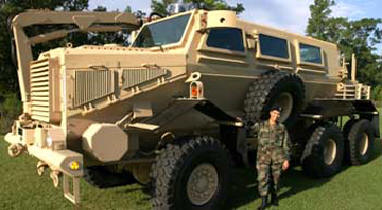
The standard Buffalo H in service. The G.I. gives the scale of this vehicle.
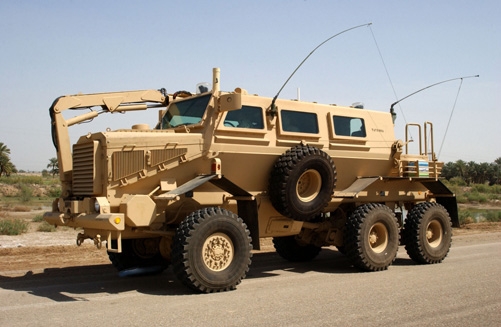
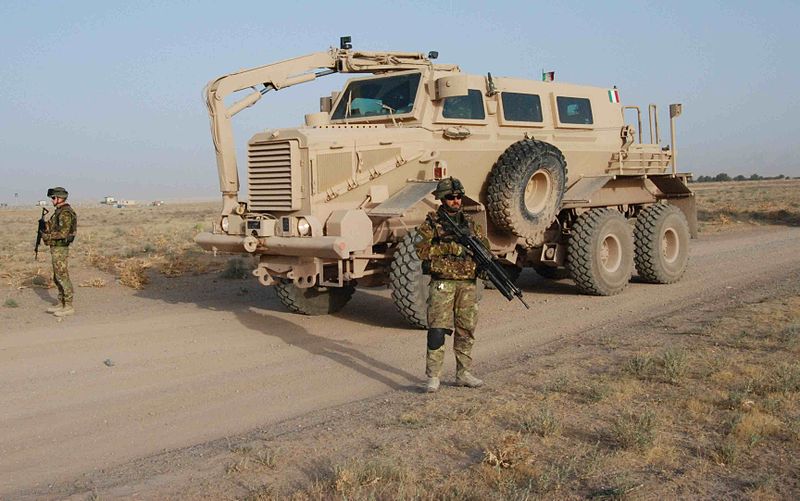
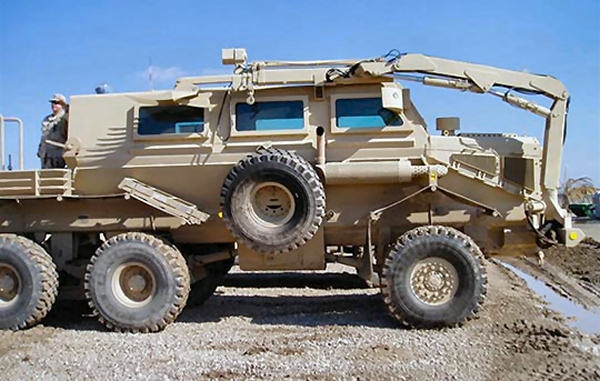
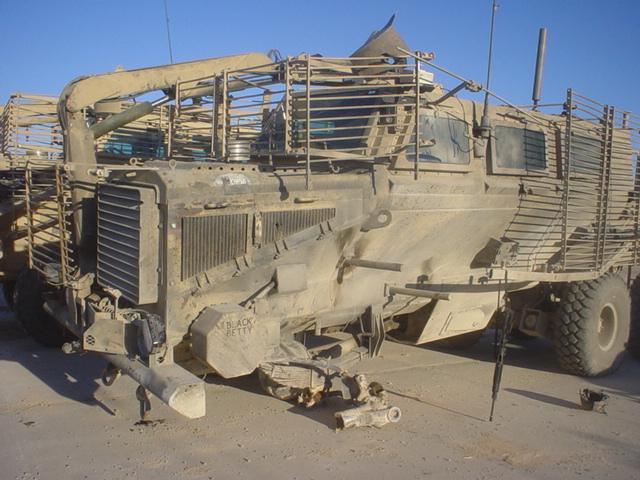
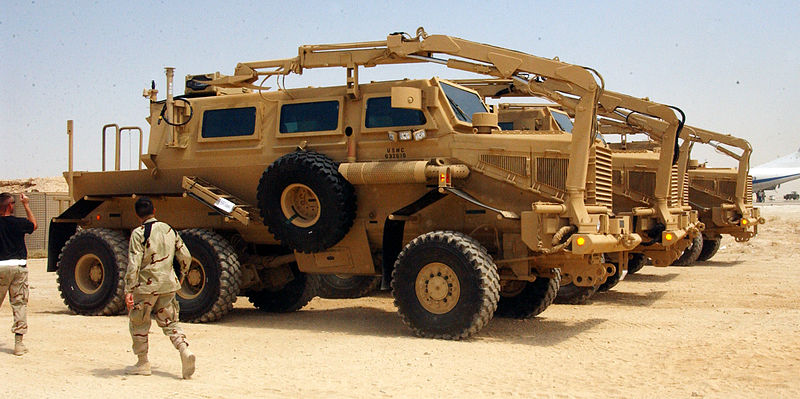
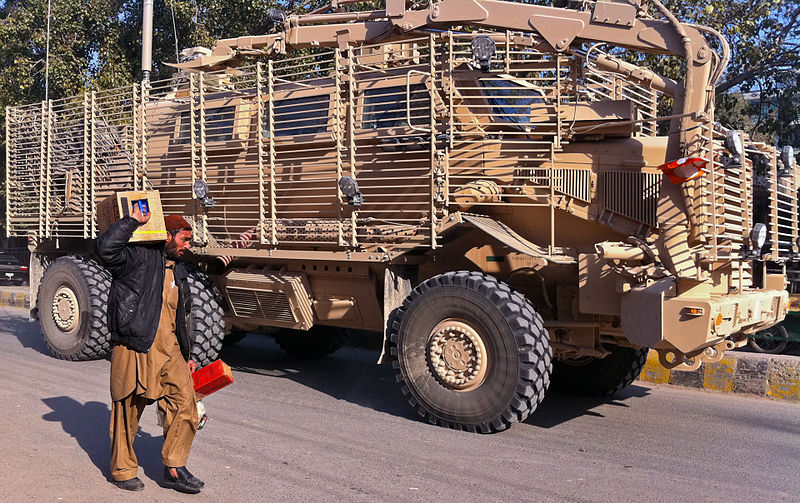
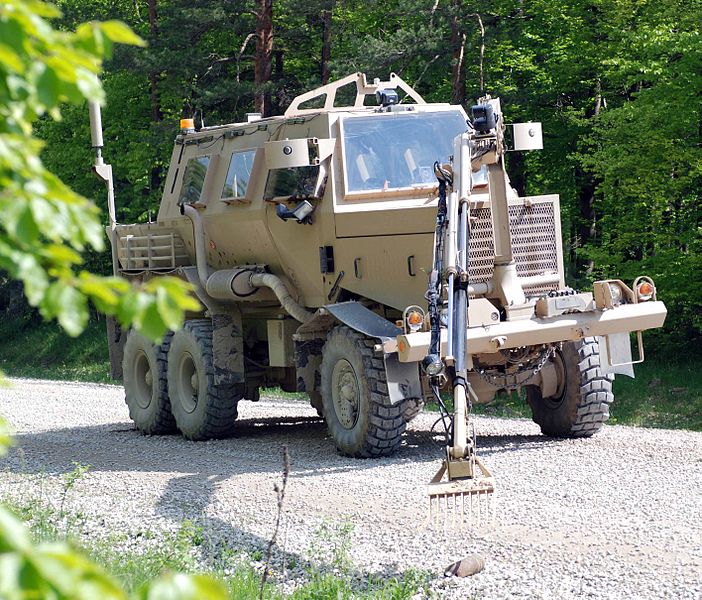
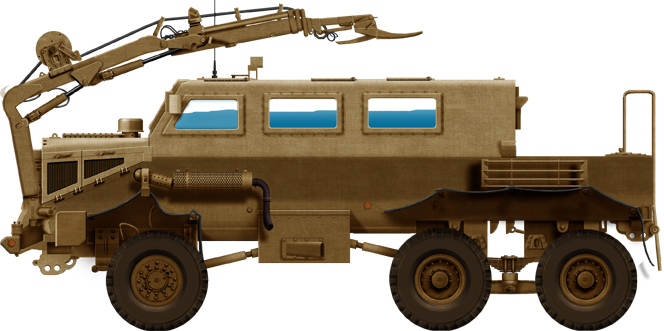
USMC Buffalo MRAP in Iraq, 2005, with the usual sand beige livery.
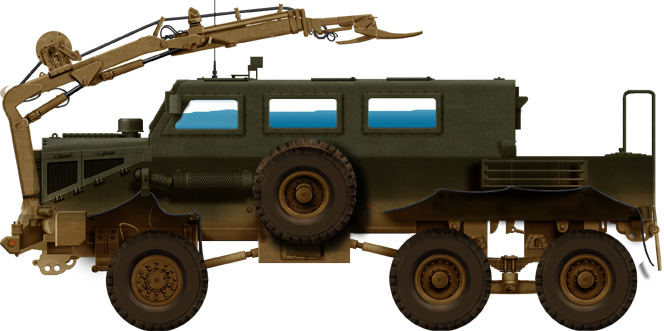
Buffalo MRAP in Green livery.

Buffalo MRAP in Iraq with a camouflaged livery and cage armour, 2010

Modern Tanks
Modern MBTs posters

Denel Bagder (2018)

Type 16 MCV (2016)

Gepard 1A2 last rounds 2011

SANDF

Russian AFVs

Main Battle Tanks
